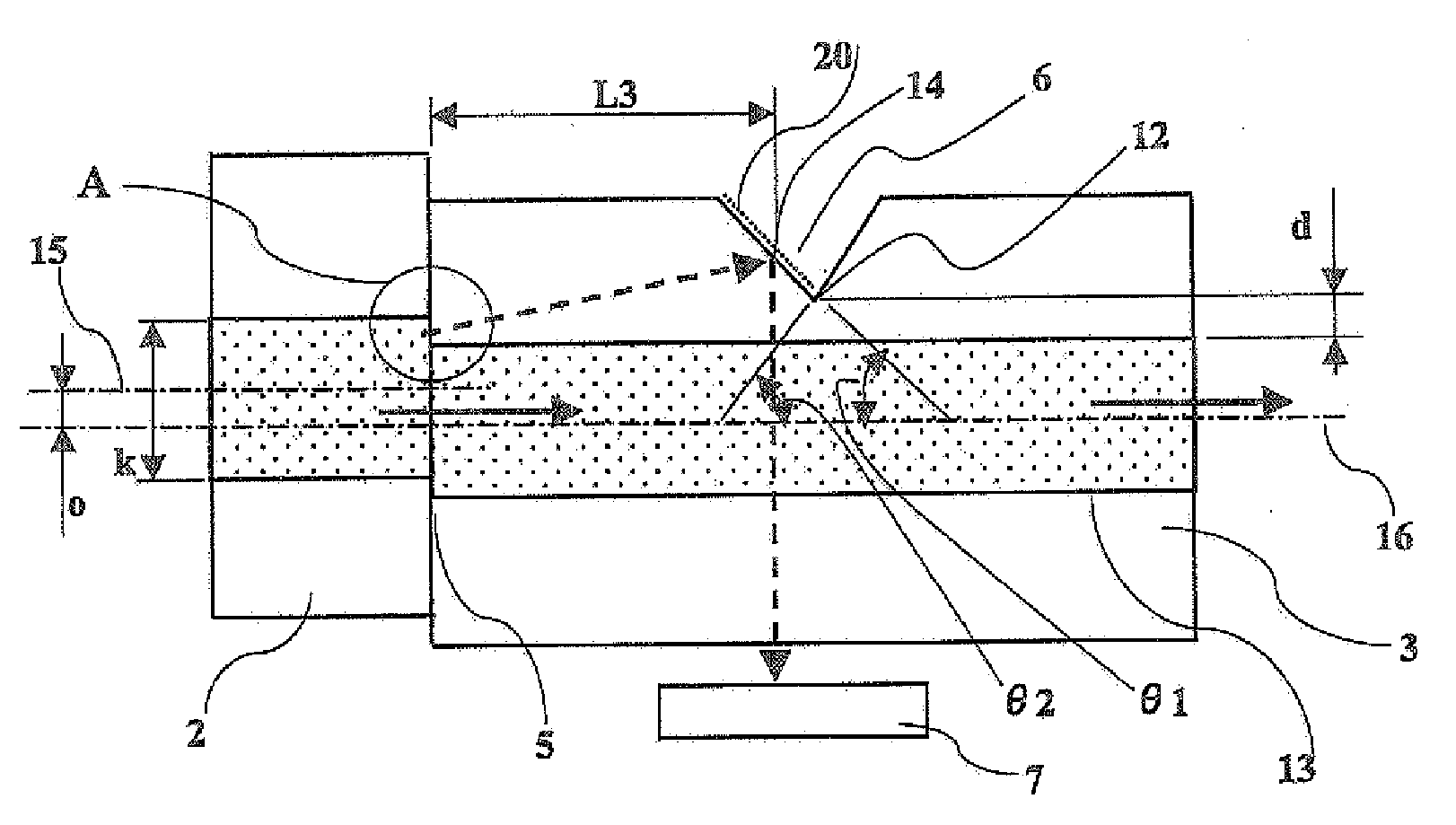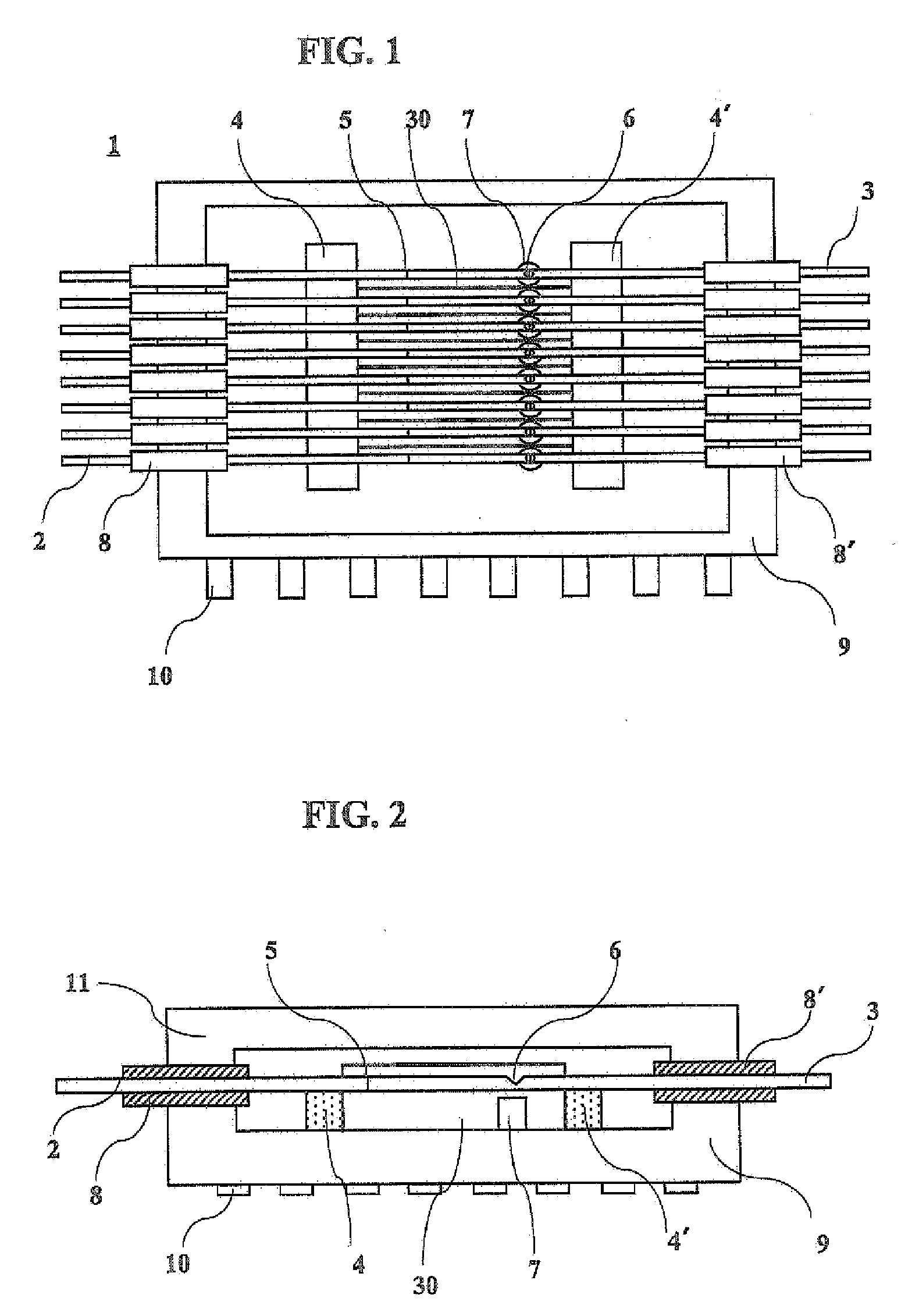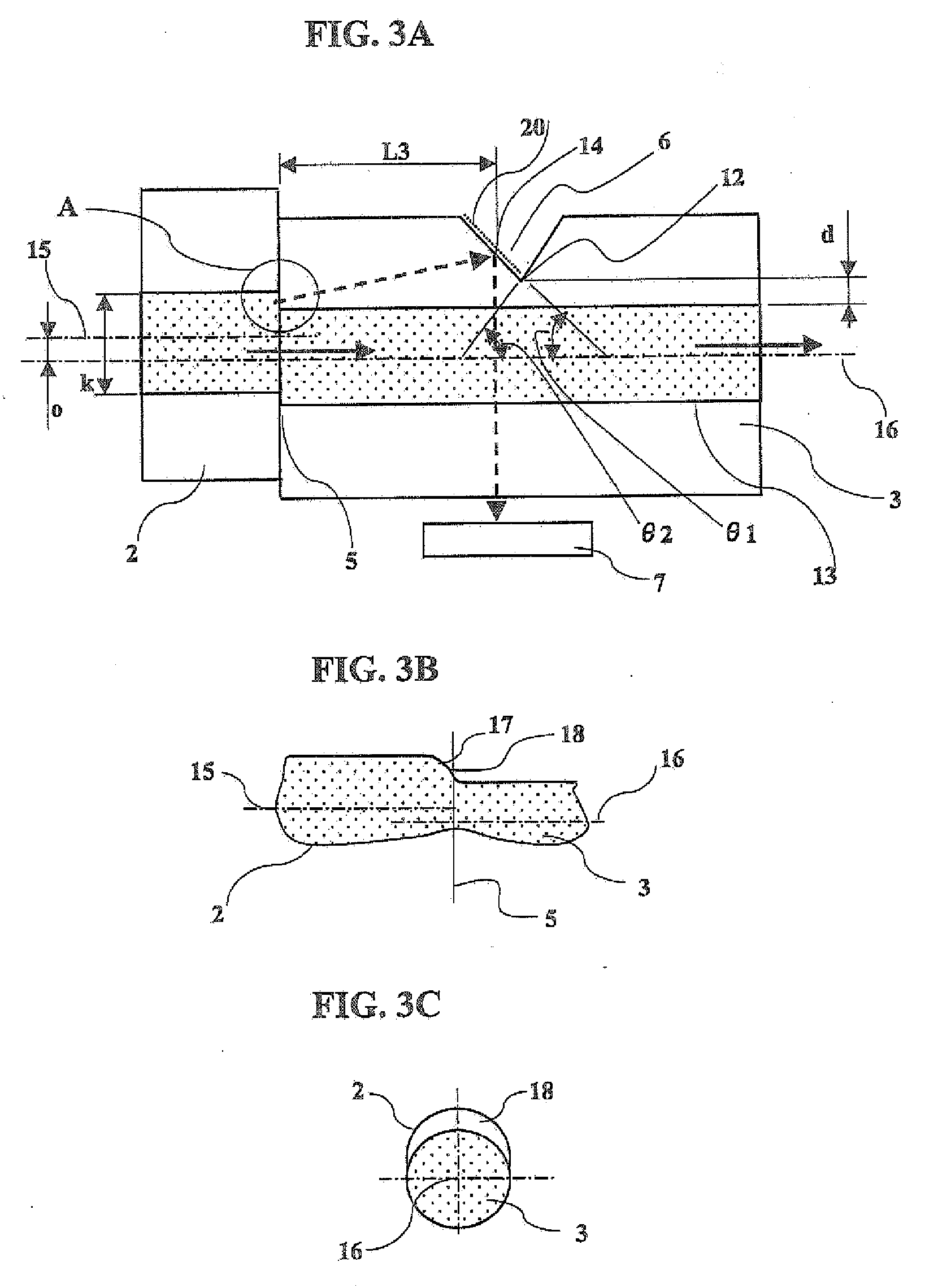Optical power monitor
a technology power monitors, applied in the field of optical power monitors, can solve the problems of requiring the reduction of the size of each power monitor, the difficulty of reducing the size of the product, and the difficulty so as to achieve the effect of reducing the responsivity variation range, high responsivity, and reducing the size of the power monitor
- Summary
- Abstract
- Description
- Claims
- Application Information
AI Technical Summary
Benefits of technology
Problems solved by technology
Method used
Image
Examples
example 1
[0070]FIG. 1 is a plan view of an optical power monitor of the present invention in a state where an upper lid is removed. FIG. 2 is a longitudinal sectional view of the optical power monitor. FIG. 3A is an enlarged longitudinal sectional view for explaining a fusion splicing portion between two optical fibers and a notch in the downstream-side optical fiber. FIG. 3B is an enlarged longitudinal sectional view along an offset plane for explaining the fusion splicing portion between the two optical fibers. FIG. 3C is a transverse sectional view for explaining the fusion splicing portion. FIGS. 4A and 4B are schematic diagrams for explaining travel of light leaked into a cladding layer from a core of the fusion splicing portion.
[0071]The structure of an optical power monitor assembly 1 of the present invention will be described in detail with reference to FIGS. 1 and 2. FIG. 1 shows an 8-channel optical power monitor assembly 1 having eight optical power monitors housed in a case 9. Li...
example 2
[0077]FIG. 5 is a graph showing the relationship between the responsivity (mA / W) of the photodiode and the distance L3 (mm) between the fusion splicing portion and the light reflection surface. The responsivity was measured while changing the distance L3 between the fusion splicing portion and the light reflection surface from 0.8 mm to 9.0 mm. The factors other than the distance L3, i.e., the shape (angle), the size of the notch, the light reflecting metal film and so on, were the same as those in EXAMPLE 1. It can be understood that the responsivity was high when the distance L3 between the fusion splicing portion and the light reflection surface was about 1 mm, when the distance was about 3 mm, when the distance was about 5 mm, when the distance was about 7 mm and when the distance was about 9 mm, and that the responsivity was low when the distance was about 2 mm, when the distance was about 4 mm, when the distance was about 6 mm and when the distance was about 8 mm. High-respons...
example 3
[0078]FIG. 6 is a graph showing the relationship between the responsivity (mA / W) and the angle θ1 (°) of the light reflection surface to the downstream-side core optical axis. 4i The distance L between the fusion splicing portion and the light reflection surface was fixed at 6.80 mm and fourth-order interference light was used. Optical power monitors were made by changing the angle θ1 of the light reflection surface from 28° to 60°. The responsivity measuring method, the light reflecting film and so on in EXAMPLE 3 are the same as those in EXAMPLE 1. The responsivity was higher than 60 mA / W when the angle θ1 was in the range from 38° to 45°, but decreased abruptly when the angle was reduced below 38° and when the angle exceeded 45°. The following is thought to be the cause of the reduction in responsivity. When the angle is smaller than 38°, light is reflected by the light reflection surface but angle at which the reflected light is radiated to the optical fiber periphery is increas...
PUM
 Login to View More
Login to View More Abstract
Description
Claims
Application Information
 Login to View More
Login to View More - R&D
- Intellectual Property
- Life Sciences
- Materials
- Tech Scout
- Unparalleled Data Quality
- Higher Quality Content
- 60% Fewer Hallucinations
Browse by: Latest US Patents, China's latest patents, Technical Efficacy Thesaurus, Application Domain, Technology Topic, Popular Technical Reports.
© 2025 PatSnap. All rights reserved.Legal|Privacy policy|Modern Slavery Act Transparency Statement|Sitemap|About US| Contact US: help@patsnap.com



